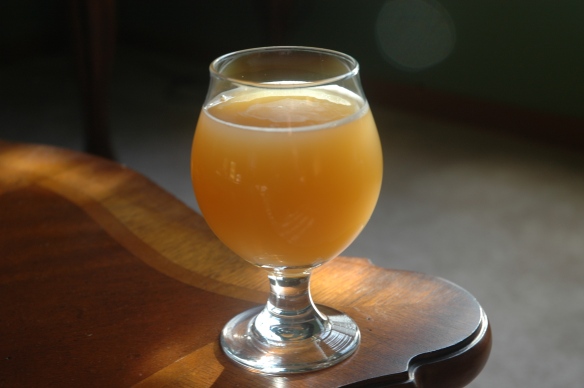
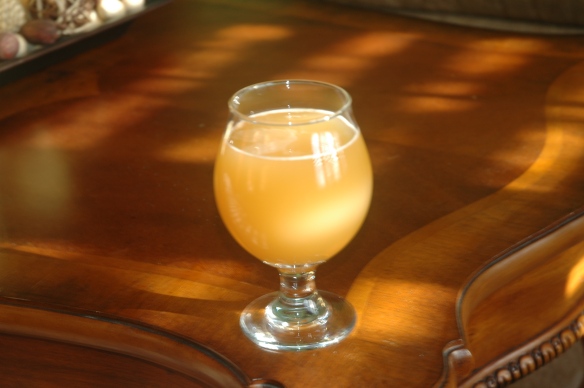
FINALLY!!!!!!! The dreary Chicago winter relented enough for me to get back outside and get brewing again. This beer was brewed on 02/20/16. It was in the low 60’s outside and it felt great, like…… unbelievably great. I took a moment to just sit in a chair in my driveway in the sun, look at the bright sky, and think about how much I can’t wait for spring and temperatures consistently like this. Hence the name of this beer. This was part one of a two batch brew day.
While I had still been playing around with my recipe for my “flagship” DIPA, White Death, I wanted to do a DIPA that was an unapologetic fruit juice bomb. As it turns out, White Death’s hopefully final version will likely be a juice bomb too, so I needed to differentiate this beer. One of my favorite breweries on the east coast is Trillium in Boston, and I’ve noticed that their DIPA’s are all brewed with a Pilsner malt base. I’ve used Pils malt for half the base grain in an IPA before, but never the majority of the grist, so I thought this would be a fun way to set this beer apart. Pilsner malt has a nice crisp grainy flavor, so it should work pretty nice in an IPA. Citra and Mosaic will be the key players in the newest batch of White Death, and while they factor in prominently here, Galaxy hops are the fun new addition. This beer should have a nice grainy light colored base for all those juicy hops to play on.
This beer isn’t a departure from my usual pale ales though, so I’m expecting a smooth, creamy body, restrained hop bitterness, and loads of juicy hop flavor. This should be another great example of a Northeast IPA. If you’re reading my blog for the first time and don’t know what I mean by that, think IPA’s that are hazy juice bombs, not the more resiny and bitter versions more typical to the west coast style. I’ve grown pretty bored with the typical west coast IPA’s, but unfortunately there aren’t many breweries around the Chicago area that make beer resembling the beers coming from Trillium, Treehouse, Hill Farmstead, and so on, so I brew my own!
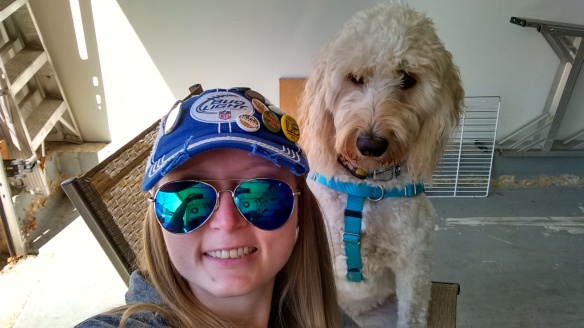
As I stated, Pilsner made up the majority of the grist here. I bumped up the white wheat from the levels in some of my other pale ales, dropped the oats I often use, and added carapils. Oats can leave a slick sort of mouthfeel which I’m trying to avoid, so I’m hoping the higher percentage of wheat and carapils do great things for the body here. I added a bit of light caramalt for a hint of color. I also added some dextrose to bump the abv up a bit and keep the sweetness down. Galaxy, Citra, and Mosaic make up the hop bill with Warrior for bittering. All three of these hops together should produce an absolute juice bomb, which is the goal here! As usual, Wyeast 1318 London Ale III is the yeast of choice. I’m shooting for 8% abv, which to me is kind of the IPA/DIPA sweet spot. Its enough that youre drinking a bigger beer packed with a ton of flavor, but it lacks some of the syrupy malt sweetness that DIPA’s can sometimes get once they pass that 9% mark or so. This will be the first crack at this recipe, but its definitely not a departure from my usual, so barring anything unexpected happening, this should be right at home in my “Northeast” pale ale line up.
The brew day for this one was pretty straight forward. I got started at about noon. This was a party of a brew day for sure. This being the first brew of the season combined with gorgeous weather meant everyone had their drinking shoes on! We probably had about a dozen family, friends, and neighbors come over. Everyone brought a Mexican dish to share, so we had a bit of a fiesta. The feast got into full swing during the second batch, but this one was still a ton of fun. The beer itself went smoothly. I hit my mash temp of 152, boiled 90 minutes for the Pils base, did a 45 minute hopstand, and chilled. The nice thing about brewing after winter is how cold the ground water still is, so this chilled to 70 degrees in no time. I filtered the hop sludge out, pitched the yeast, and stuck this in my fermenting chamber.
Here’s the water for this brew:
Ca+2 Mg+2 Na+ Cl- SO4-2 HCO
127.3 7.5 25.3 201.9 92.0 0.116
Here’s the recipe!
Recipe Specifications
————————–
Batch Size (fermenter): 5.75 gal
Bottling Volume: 5.25 gal
OG: 1.074 SG
Estimated Color: 4.5 SRM
Estimated IBU: 76.6 IBUs
Brewhouse Efficiency: 73.00 %
Est Mash Efficiency: 75.1 %
Boil Time: 90 Minutes
Ingredients:
————
Amt Name Type # %/IBU
11 lbs 4.0 oz Pilsner (2 row) (Gambrinus) (1.6 SRM) Grain 1 74.4 %
2 lbs White Wheat Malt (2.4 SRM) Grain 2 13.2 %
8.0 oz Carapils (Briess) (1.5 SRM) Grain 3 3.3 %
5.0 oz Acid Malt (3.0 SRM) Grain 4 2.1 %
5.0 oz Caramalt (Thomas Fawcett) (15.0 SRM) Grain 5 2.0 %
12.0 oz Corn Sugar (Dextrose) (0.0 SRM) Sugar 6 5.0 %
1.00 oz Warrior [15.00 %] – Boil 90.0 min Hop 7 48.2 IBUs
1.00 oz Citra [12.00 %] – Boil 10.0 min Hop 8 13.1 IBUs
1.00 oz Galaxy [14.00 %] – Boil 10.0 min Hop 9 15.3 IBUs
2.00 oz Galaxy [14.00 %] – Boil 0.0 min Hop 10 0.0 IBUs
1.00 oz Citra [12.00 %] – Boil 0.0 min Hop 11 0.0 IBUs
1.00 oz Mosaic (HBC 369) [12.25 %] – Boil 0.0 mi Hop 12 0.0 IBUs
1.00 oz Citra [12.00 %] – Dry Hop 1
1.00 oz Galaxy [14.00 %] – Dry Hop 1
1.00 oz Mosaic (HBC 369) [12.25 %] Dry Hop 1
1.00 oz Mosaic Dry Hop 2
1.00 oz Citra [12.00 %] – Dry Hop 2
1.00 oz Galaxy [14.00 %] – Dry Hop 2
Mash Schedule: Single Infusion, Light Body, No Mash Out
Total Grain Weight: 15 lbs 2.0 oz
—————————-
Name Description Step Temperat Step Time
Mash In Add 17.97 qt of water at 165.9 F 152.0 F 60 min
UPDATE: This beer went into the kegs for the second round of dry hops last night on March 2nd. I did my usual closed system transfer under Co2. The beer’s FG came in at 1.013, right on the money giving me the 8% abv I was shooting for. The hydrometer sample tasted amazing, and as of now it seems that the Pils malt base added enough to set it apart from my other IPAs. We’ll see how this continues to come together in the next couple weeks!
Tasting Notes 03/29/16:
Appearance: This is a beautiful beer if hazy hop milkshakes are your thing! Its golden/light orange in color and practically glows when held to the light. Very similar in appearance to a glass of orange juice. The beer pours with a white head and good lacing.
Smell: Huge hop aroma on this one. Very juicy citrus comes to mind, more orange than grapefruit. There’s also a fair amount of pineapple aroma in this as well, wit hints of mango too. This is one of the best smelling beers I’ve brewed. No malt aroma is detectable underneath the hops, and maybe just a hint of aroma from the yeast.
Taste: The bitterness hits with a nice punch but mostly fades quickly. It’s the slightest bit more bitter than I expected, but its still very smooth and super drinkable. This beer is a fruit juice bomb. There’s a ton of juicy citrus in the flavor of this. A lot more orange that grapefruit in the flavor. As in the aroma, there’s a good amount of pineapple flavor along with notes of mango and papaya in the background. The 1318 lends a light fruity ester profile that nicely compliments the hops. No real malt flavor, just a light sweetness that compliments the hops.
Mouthfeel: Medium body and carbonation. Typical mouthfeel that I love in the New England style pales. The body is smooth and silky. For an 8% beer, I feel like this is refreshing and almost chuggable.
Overall: I’m thrilled with the way this turned out, and will absolutely brew it again at some point. This thing is so juicy, I can’t imagine anything I’d do to change the recipe. If I was to do anything, I’d maybe make the Galaxy more the star of the show just to make it stand apart from my other DIPA, White Death.
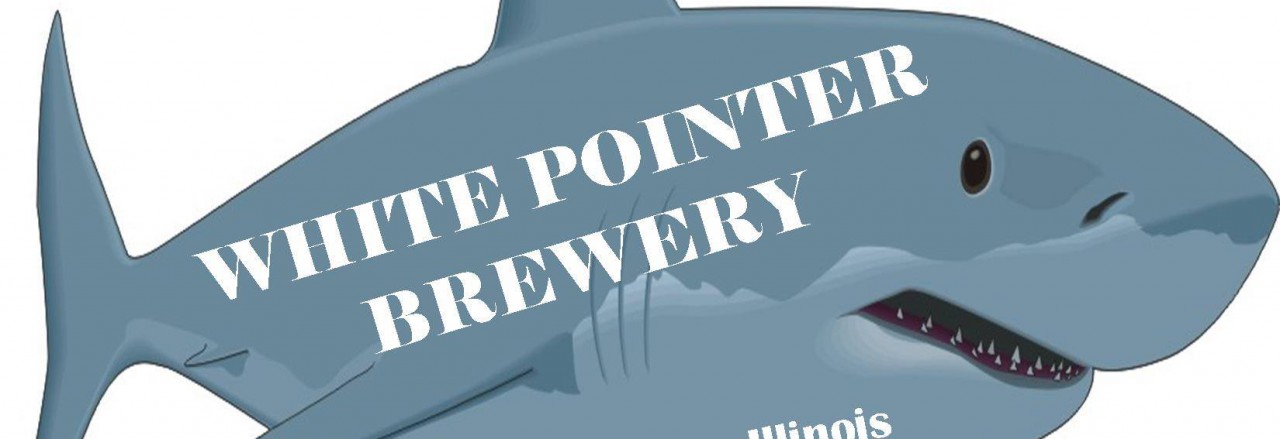
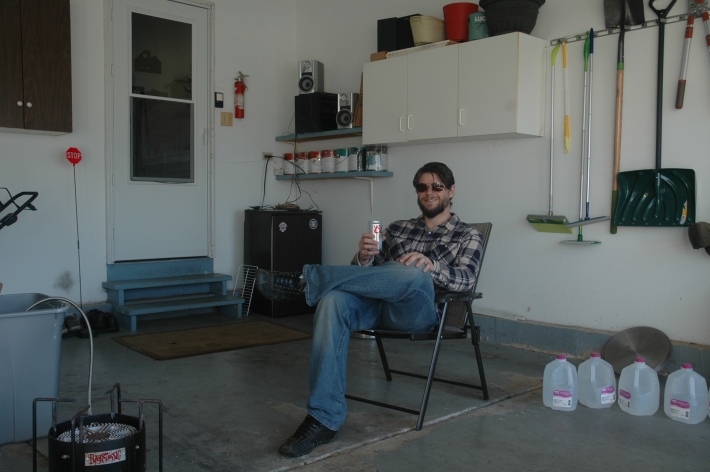
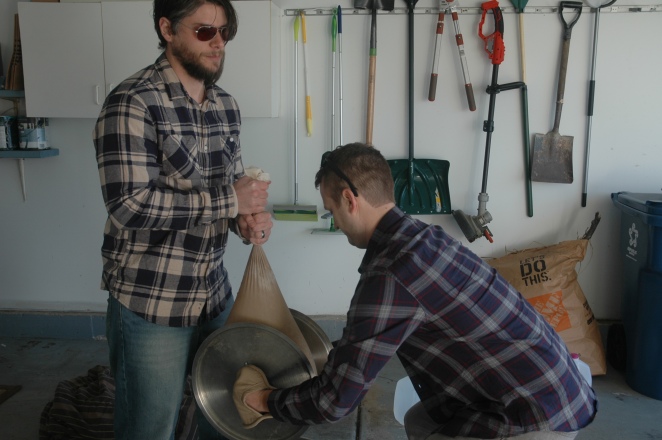
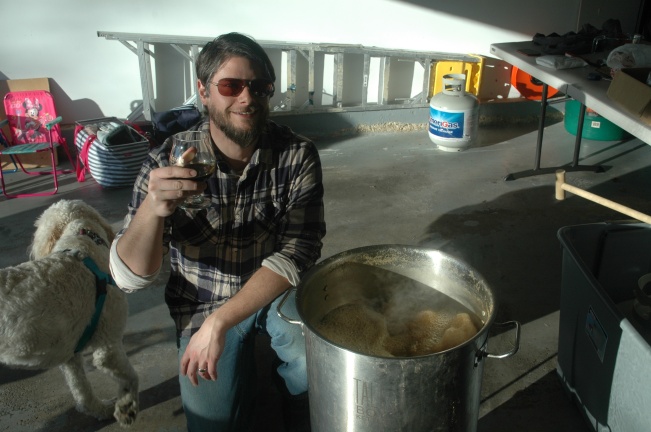
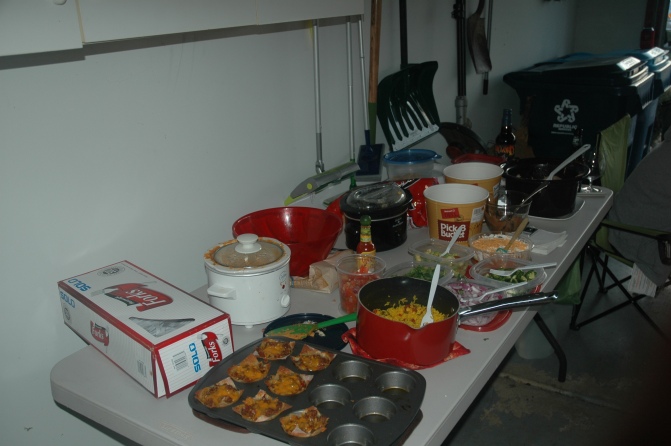
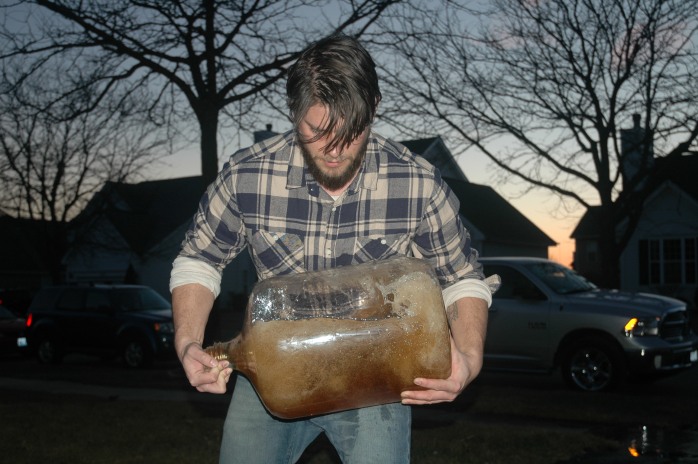
How is the beer looking in the fermenter? Looks like an awesome recipe!
LikeLiked by 1 person
Its beautifully hazy still after a week and a half! Thanks, I haven’t been this excited to try a new beer recipe in a while! I’ll be sure to update the post as soon as it’s at its peak!
LikeLike
How far apart are your dry hops? how many days for dry hop one and dry hop two. The recipe looks great! Sorry there aren’t more places like treehouse out your way! I was there a few weeks ago.
LikeLike
I do my first round of dry hops at about five days into fermentation as its wrapping up. I leave those hops in for 3 to 5 days depending on when I get around to transferring. I then do a closed system transfer to a purged keg with the second round of dry hops. I have them in bags with stainless steel washers to weigh them down and I tie them to the handles of the kegs with unwaxed dental floss. I keep those in for another 3 to 5 days, remove them, purge the keg again and then get carbing. I’ve had a couple Treehouse beers and was very impressed with them! I’ve had a lot more from Trillium, but they seem to be doing similar things.
LikeLike
Pingback: Sungazer Northeast DIPA Tasting Notes! | White Pointer Brewery
Hey Eric, great blog! Happened upon it doing some research and I’m glad I did. My brother and I started brewing at the end of last year. We just did our first all grain last month and are ready for our second in a couple days! We were lucky to get our hands on a bottle of Trillium Scaled Way Up (we live in Wisconsin). Blew our minds. I found out they brew that one with Pilsner and decided that was going to be our next base malt. I’ve never brewed with Pilsner before. Any tips?
LikeLike
Hey Colin,
First off, thanks for reading! I haven’t had Scaled Way Up, but it seems in line with the other beers from Trillium that I’ve had, so I’m sure its great stuff. I’ve brewed with Pilsner a few times now, and I like it as a base malt. This beer was the first time I used it as the primary base for an IPA, and I was very pleased. Pilsner malt has a nice grainy and bready flavor that works well with American hops and doesn’t get in the hops way while still providing enough character that you don’t need a bunch of specialty grains.
I boiled this beer for 90 minutes as opposed to my usual 60. The thinking here is the additional 30 minutes help to drive off DMS which can be a concern with Pilsner malt. That being said, I did do a half Pilsner half 2 Row DIPA that I only boiled for 60 and noticed no off flavors. Still, if I’m using mostly Pilsner malt, I’d boil for 90 just to be safe, especially if you’re doing a hopstand. You want to drive off as much DMS as possible, and really whats another 30 minutes on brew day to put your mind at ease?
Other than that, Pilsner isn’t much different than regular 2 Row. I will say with the maltster I use, Avangard, I do notice a bump in efficiency and have heard others say the same.
If you’re going for something like Trillium’s DIPA’s, go with Pilsner for the base, some flaked or white wheat, maybe some carapils, some light caramalt, and start looking into water chemistry and PH. The right water goes a long way in achieving that silky soft mouthfell that Trillium beers have. Good luck on your next brew!
-Eric
LikeLike
Thanks for the reply! It’s kind of funny, I built my recipe. Found this one and it’s pretty close. I’m using Columbus FWH. Amarillo/Citra/Galaxy the rest of the way.
Couple questions for you if you don’t mind.
Question on the water piece. With this being my second brew, I was reading simple water additions for beginners. They suggested using 100% RO water, 2 tsp of gypsum/calcium chloride, and 2% acid malt. I’m going to give it a shot but I’m not sure if I should be adding to both mash and sparge or split up those measurements between the two?
I notice you use distilled and dilute with tap water. Why?
Thanks again!
LikeLike
Let me start by saying my knowledge of the water chemistry aspect of this is VERY limited and I mostly go by researching what others have done and my own trial and error. I also do the 2% acid malt addition for pale ales to keep my Ph where I want it, usually around 5.2. That being said, its only an estimate as I do not have a Ph meter.
I have Lake Michigan Water right now, which is pretty good for brewing after I treat it for chlorine, but I still like to dilute it with RO water for even more control. I’d use 100% RO or distilled, but thats just more money I don’t need to spend since I have decent tap water. For this style of pale ale, 150 to 200 ppm chloride and around 100 ppm sulfate seems to have worked for me to get a smooth bitterness and mouthfeel. I’m usually not too concerned with the other minerals as long as they are in acceptable levels.
I only add my salts to the mash, but you can add to the mash, sparge and boil kettle if you want. When salts are added to the mash, they will affect the mash Ph, so it’s important to use a water calculator of some sort. I’ll be honest, I don’t know what effects that adding salts to the sparge has, but I will say that I do not add any there. Salts added to the kettle are merely done for taste, so if you want more of a certain mineral without it affecting your mash Ph you can add it to the kettle during the boil. Again, I’m still learning this stuff too, but I hope that helped!
LikeLike
That helps a lot thanks!
LikeLike
Hey Eric, I’m back with a question on your experience with London Ale iii. I brewed Monday. Other than over hopping (I didn’t account for higher AA on my hops for some reason and my brother heard the weight wrong so we added more than I wanted), I think this was our best brew day yet. We pitched the yeast at ~65 degrees. We ferment in my basement because it’s a pretty standard 60 to 62 degrees. With the heat produced naturally from the yeast, we’re usually right at 68 degrees. Perfect right? Monday night/Tuesday morning, that’s where we were temp-wise. I come home from work Tuesday night and it was like someone hit the turbo button. Temp rose to 74 degrees with crazy churning in the wort. Harder than I’ve ever seen before. Woke up Wednesday, it had slowed but still going pretty nuts. We dropped to 72 degrees. Got home from work in the evening, we were back down to 68 with a more normal churning in the wort. Today, I woke up and its slowing big time. We’re only going on day 3 of ferment. I’m kind of concerned that we did something wrong? The last couple batches I’ve used 1318, it’s been pretty standard. This is also the first time I’ve worried about water chem and mash pH. Wonder if that has anything to do with it?
Thanks again for your help!
LikeLike
I know that 1318 can chew through a wort pretty fast. I have a fermentation chamber with a controller, so I’ve never let it go past 68 degrees, but I’ve heard of people letting it get warmer with good results. I find the esters that yeast throws off to be really nice, a citrusy and pineapple aroma. So you might get a bit more there, but with a hoppy beer you should be fine I would think. I know water chemistry can have an effect on certain aspects of yeast performance, but I’m not sure what would have caused yours to take off like it did. Sorry, I know thats not much help, but I would think the beer will still be great! Let me know how it turns out!
LikeLike
Hey Eric! Just bottled my batch so I thought I would stop on in. This was my first experience with a big dry hop. Previously, I’ve done a couple ounces. This time I did 8 oz between Citra/Galaxy and 2 oz of Amarillo. I was a little worried I’d get grassy notes. Nope. This is one hop bomb. It honestly tastes like I’m drinking straight grapefruit juice with a good hint of pineapple at the end. I was happy in that regards. I’ve change my recipe for my next brew day a little and am omitting the citra/amarillo. I’m curious if having two big hops like galaxy and citra together in such big quantities pay off.
I did not taste any issues with our fermentation spiking to 74 at all. We did dry out quite a bit more than planned. I was looking to be in the 1.017 range. We settled at 1.012. That puts our attenuation at 84% which is crazy. Probably a result of our day 2 spike.
It’s a very golden yellow. No orange hues to it like yours. Our malt bill was pretty similar except I used Pilsner which, I’m assuming, is the reason for our color difference.
I also used 100% distilled water and played with water chem for the first time. I don’t have a pH meter but I was pretty close with my numbers. We were low in both mash and sparge temp. A lot easier than I made it in my mind.
The only issue I really ran into was not following my recipe. i added more hops than I wanted. From the taste of it, not a bad thing! I also under primed by bottles which I’m not happy about. I’m thinking of popping the caps and putting a little more corn sugar in there. I’m afraid of reintroducting O2 though. It just points to me needed to get on kegging ASAP.
Practice makes perfect right? So my brother and I will be at it again soon. I was pretty happy with how the beer turned out before carbing. Really excited to see what some time and carb does to it!
LikeLike
That sounds like an awesome beer you’ve got! Citra, Galaxy, and Amarillo sounds like a delicious hop combo! I’d skip trying to re-prime the bottles. Like you said, I’d worry the risk of oxygenation is too high, and that would ruin the awesome hoppy aromas you’ve got going.
Did you boil for 90 minutes? If you boiled for 60 that could be why mine got the slight orange tint. That extra 30 minutes can darken the wort slightly.
As for your FG, that sounds good to me! I’ve always felt 1.012 to 1.014 is kinda the IPA or DIPA sweet spot. That way it’ll finish dry, but still have some body and smoothness.
LikeLike
Yeah the hop combo is pretty impress. Like I said, I’m still wondering if it was worth the dollars put in for all that extra citra. I’m going to hit a galaxy/columbus APA next.
I think I used half the priming sugar I was supposed to. I’m hoping it will carb… just take a bit longer than the week I’m used to. Which will be good. I’m boil to bottle in 2 weeks.
I did a 75 min boil. I read a bunch of differing opinions on the Pilsner boil. Some said 90 like you. Some said they’ve done 60 with no issues. So I split it. Seems to be very good. I really like it as a base malt. Very light. Really lets the hops shine.
LikeLike
Which Pilsner 2 row did you use? Cause I notice on beer smith it says German, U.K., and Belgium
LikeLike
My local shop carries Avangard Maltz Pils malt in bulk. Its a really nice maltster from Germany and their Pils malt has really great flavor.
LikeLike
Thanks for the reply. I had a few more questions. The corn sugar do you put that in the mash or boil? And at the end of the first dry hop do you throw those hops and keep them in the second dry hop as well? Thanks again.
LikeLike
I add the corn sugar with about five minutes left in the boil just to make sure it gets sanitized. I bag my dry hops to avoid any clogged dip tubes or poppets, so I just leave the hops behind in the fermenter when I transfer to the keg.
LikeLike
So no sparging for this, is that what “no mash out” means? sorry noob question.
LikeLike
So I do a modified version of BIAB. I still use traditional mash volumes, and have another kettle filled with my sparge volume at 170 degrees. When my mash is done, I move the grain bag into the sparge kettle for 15 minutes, then combine the two worts in my boil kettle. This method gives me between 70% and 75% efficiency. Mahsing out is heating the mash to 168 prior to sparging to make the sugars rinse off the grain easier, but I haven’t found that to be necessary with my set up.
LikeLike